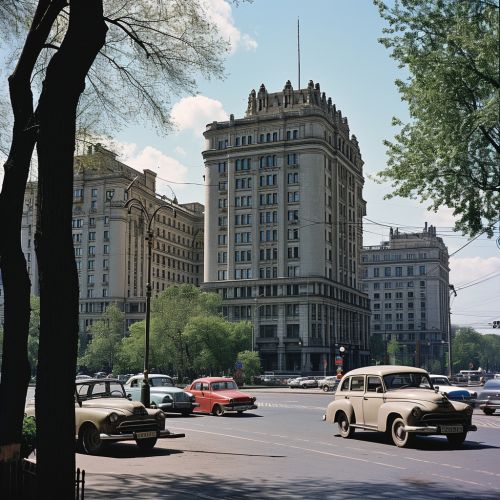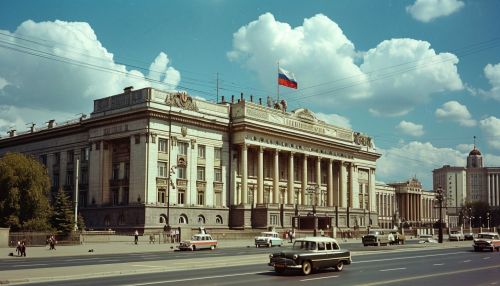Council of People's Commissars
Origins and Formation
The Russian Revolution of 1917 marked a pivotal moment in world history, leading to the establishment of the world's first socialist state. The Council of People's Commissars (Sovnarkom) was formed as the government of the Russian Soviet Federative Socialist Republic (RSFSR) and later of the Union of Soviet Socialist Republics (USSR). The Council was established on November 8, 1917, by the Second All-Russian Congress of Soviets of Workers' and Soldiers' Deputies as the administrative body that replaced the Russian Provisional Government.


Structure and Function
The Council of People's Commissars was composed of individuals who held the title of "People's Commissar". Each Commissar was in charge of a Commissariat, equivalent to a modern-day ministry. The Chairman of the Council of People's Commissars, effectively the head of government, was elected by the Congress of Soviets. The first Chairman was Vladimir Ilyich Lenin, who held the position until his death in 1924.
The Council was responsible for the administration of the state and the implementation of policies decided by the All-Russian Congress of Soviets and its Central Executive Committee. The Council issued decrees and decisions that were binding throughout the country. It also had the power to negotiate treaties with foreign countries, control the state budget, and manage the economy.
Key Commissariats
Several key Commissariats were established within the Council of People's Commissars. These included the Commissariat for Foreign Affairs, the Commissariat for Military and Naval Affairs, the Commissariat for Internal Affairs, the Commissariat for Justice, the Commissariat for Labour, the Commissariat for Social Security, the Commissariat for Education, and the Commissariat for Finance.
Each Commissariat was responsible for a specific area of government policy, administration, and legislation. For instance, the Commissariat for Foreign Affairs was in charge of conducting foreign policy and diplomatic relations, while the Commissariat for Military and Naval Affairs was responsible for the defense of the state and the organization of the armed forces.
Evolution and Dissolution
Over the years, the structure and function of the Council of People's Commissars underwent several changes. In 1946, it was renamed the Council of Ministers, reflecting a shift towards a more conventional governmental structure. The change was part of a broader trend in the post-World War II Soviet Union to move away from revolutionary rhetoric and towards a more bureaucratic and institutionalized form of governance.
The Council of Ministers continued to serve as the government of the Soviet Union until its dissolution in 1991. The Council was replaced by the Cabinet of Ministers of the Union of Soviet Socialist Republics, which existed until the dissolution of the Soviet Union later that year.
